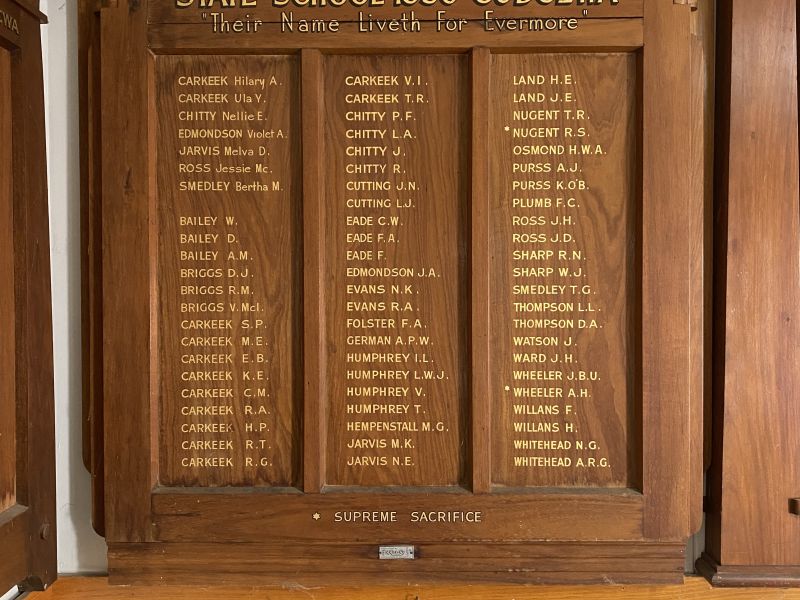Allan Henry Wheeler
Allan was born on the 10th of December 1912 at Cudgewa, Victoria. He was the youngest of nine children to Francis Edward and Elizabeth Mary (née Carter) Wheeler. When Allan was only two years-old, one of his older brothers, James Wiiliam, was killed in action in France in 1915. Allan’s mother passed away at “The Gap”, Wabba on the 4th of March.
Allan enlisted at Corryong on the 10th of June 1940. At the time he was a single 27 year-old farmer. He was allocated the Army No. VX44596 and initially placed with the general reinforcements. After spending two months at Caulfield, he was transferred to the 2/14th Training Battalion situated at Wangaratta in Victoria. After his training had been completed he was posted to the 2 Reinforcements for the 32nd Infantry Battalion.
The unit embarked at the Port of Melbourne on the 5th of February 1941, disembarking in the Middle East on the 23rd of March. They then travelled by train to the camp at Kilo 89 in Palestine
The Afrika Korps was pushing the Allied forces back from El Agheila and Benghazi. The 9th Division was forced to withdraw to Tobruk. One of the division’s brigades, the 24th, only had two battalions and it was decided that the 2/32nd would transfer from Palestine to Tobruk to make up the third battalion.
Once in Tobruk, the 2/32nd participated in the usual defensive duties along the Red Line (Tobruk’s outer line of defence) and aggressively patrolled in no man’s land.
Signaller W. A. Marchant was in Tobruk at the same time as Allan. In a letter to his parents, which was subsequently published in the 24th of September edition of the Perth Daily News, he describes a typical Tobruk dugout.
“... a hole in the ground seven feet by four feet and about four feet deep. It is lined with Italian blankets, tin and cardboard. It is roofed over with iron stays covered with blankets. On top of that is a layer of asbestos and stones to keep out the red-hot shrapnel…”
Fleas, rats and scorpions were constant visitors to the diggers in their dugouts. Frequent dust storms would also cover the trenches and dugouts with layers and layers of fine grained dust.
There were some things in Tobruk that could harm you; bombing raids, artillery barrages, tank fire, disease and patrolling Germans. And yet for Allan it was the collapse of his dugout.
The formal court of enquiry held in the field reported that:
- “On the night 1/7/41, at approx 2315 hrs at C Coy. 2/32 Bn at Tobruk, Pte Wheeler A.H. whilst asleep received injuries appearing to be contusions of the left temporal regions, which could have rendered him unconscious, thereby causing him to be suffocated by being covered with earth and stones.
- As a result of these injuries Pte Wheeler A.H. died between the time of 2315 1. July and 0020 hrs 2 July 41.
- The injury sustained resulted from the collapsing of the roof of the dugout in which Pte Wheeler was sleeping.
- The collapsing resulted in the breaking of a wooden cross faulty bearer, not being noticeable before.
- All available attention to have the life was rendered as early as possible.
- VX44596 Pte Wheeler A H. was on duty at the time of accident.
- The acc [accident] cannot be attributed to negligence of any persons.”
Allan was buried in grave No. 525 in the Tobruk War Cemetery, Libya. He is also remembered on the Australian War Memorial Roll of Honour, the Cudgewa State School WW2 Roll of Honour and the Corryong War Memorial. For his service, he was awarded the 1939-1945 Star, the Africa Star, the Defence Medal, the War Medal 1939-1945 and the Australian Service Medal 1939-1945.

 Stephen Learmonth
Stephen Learmonth